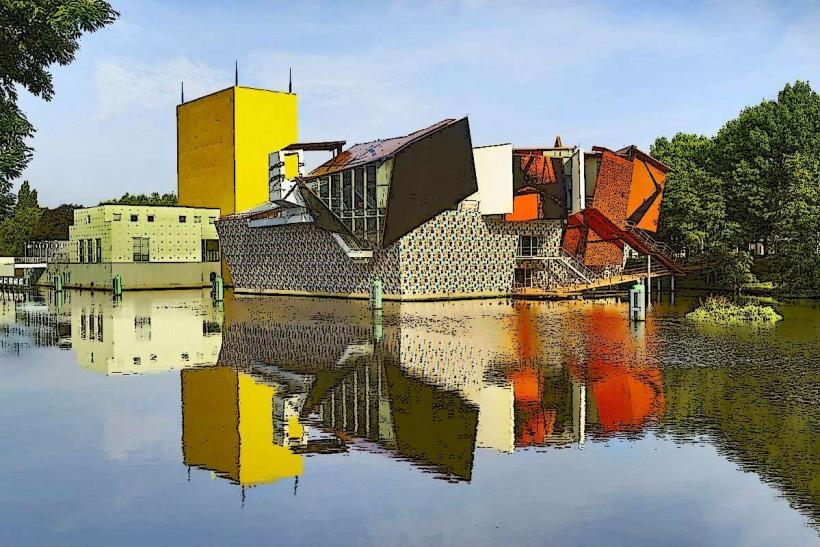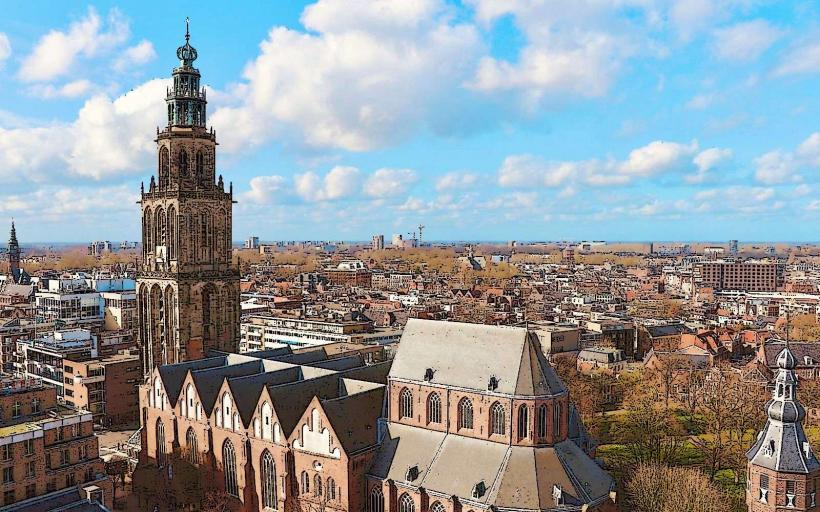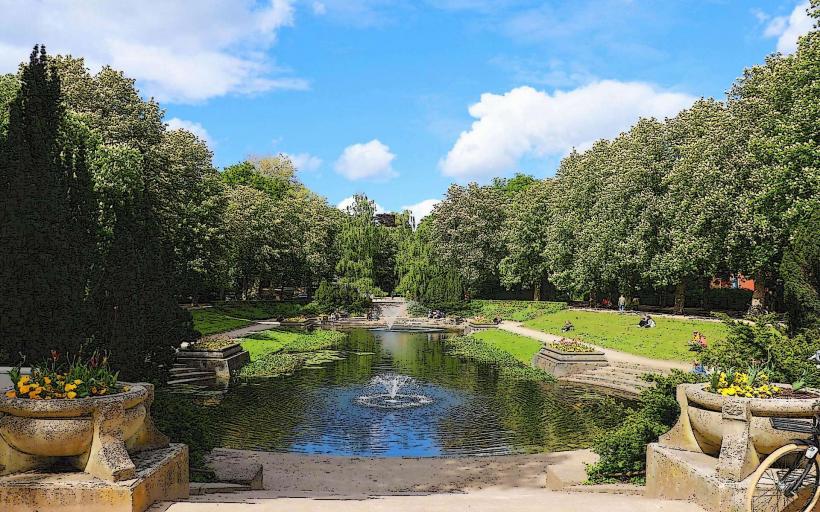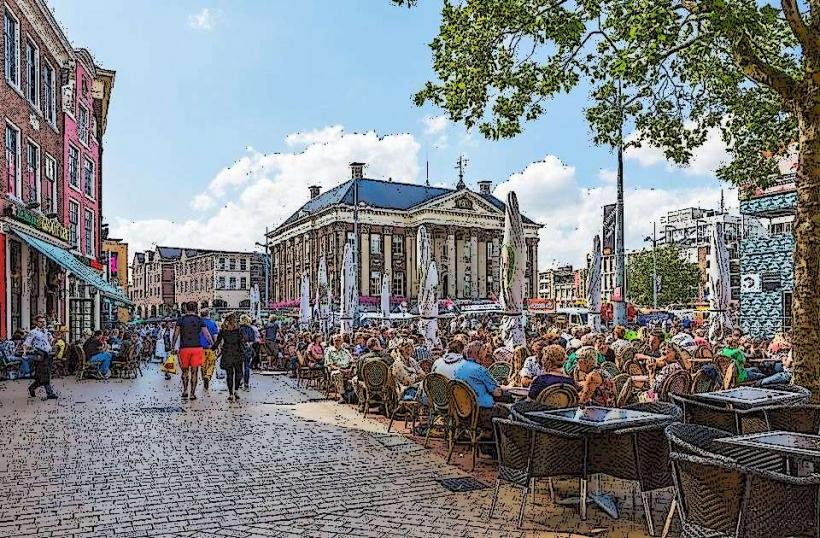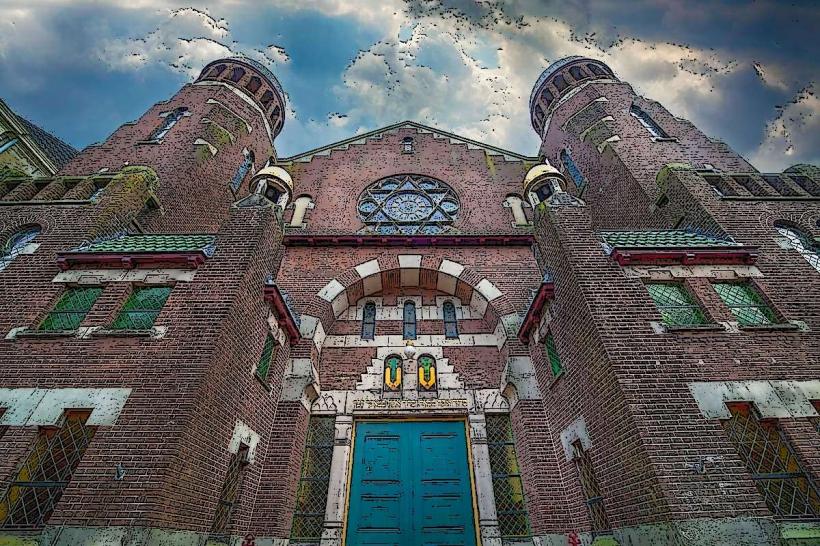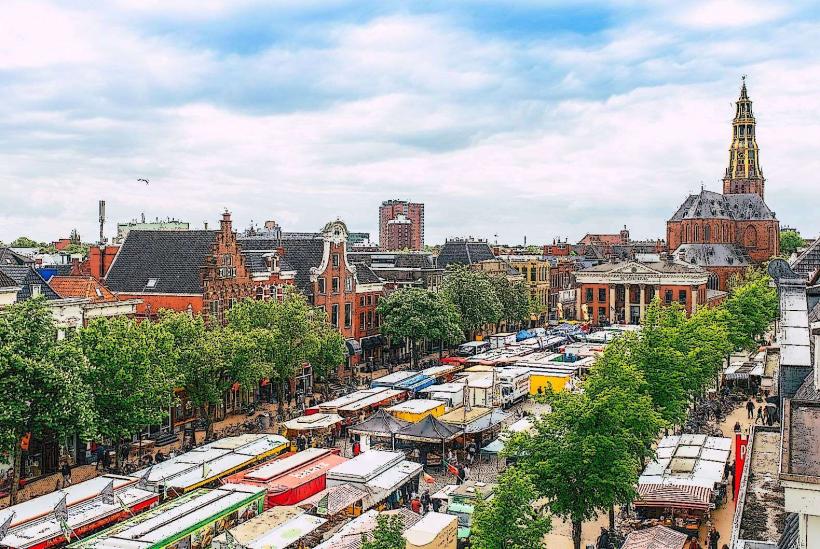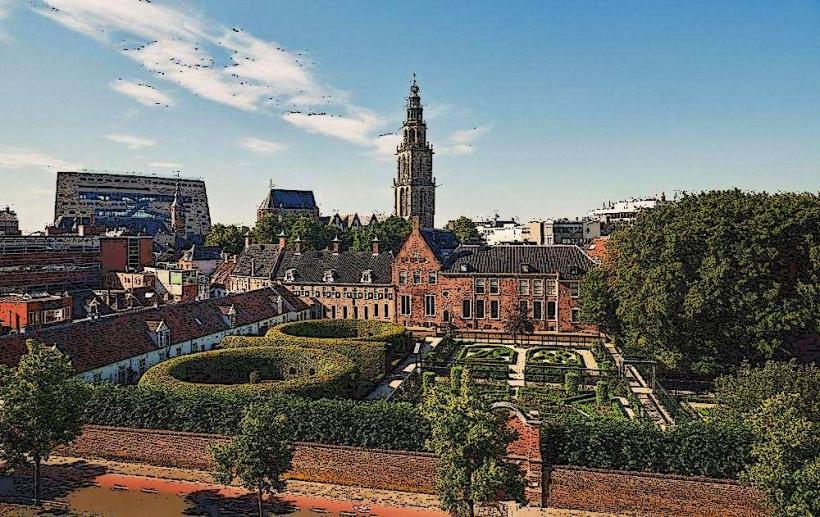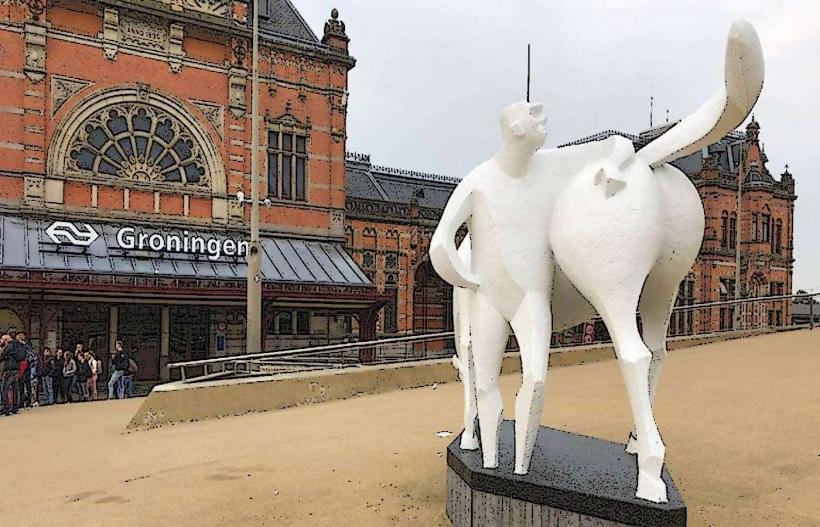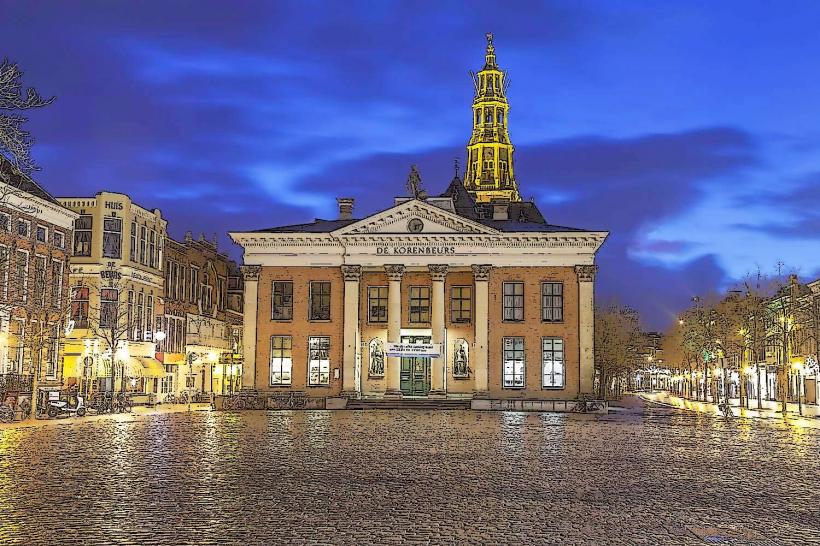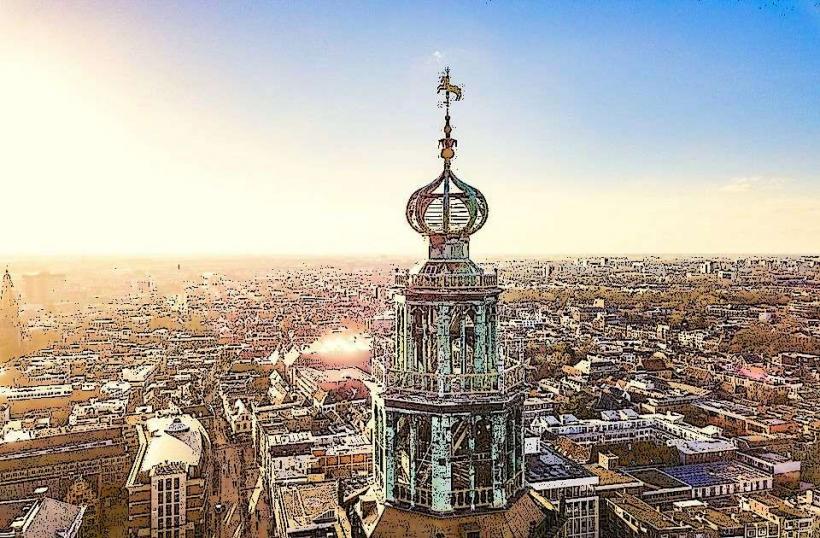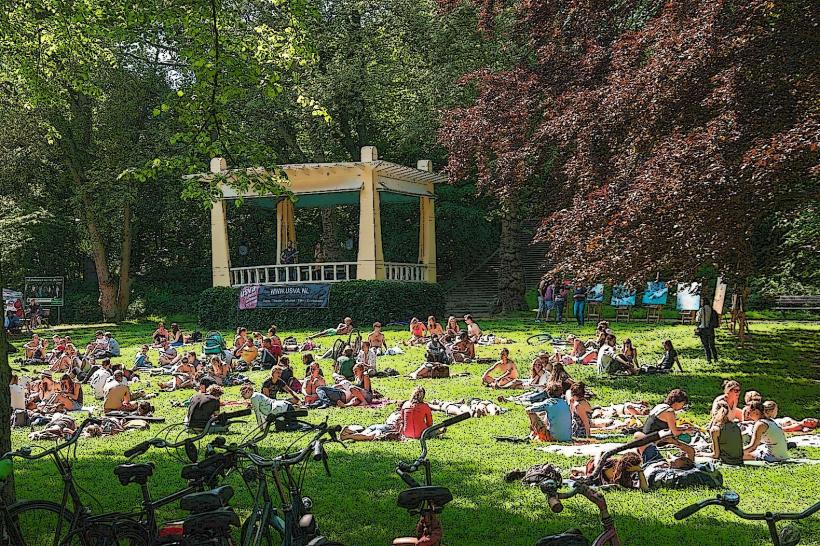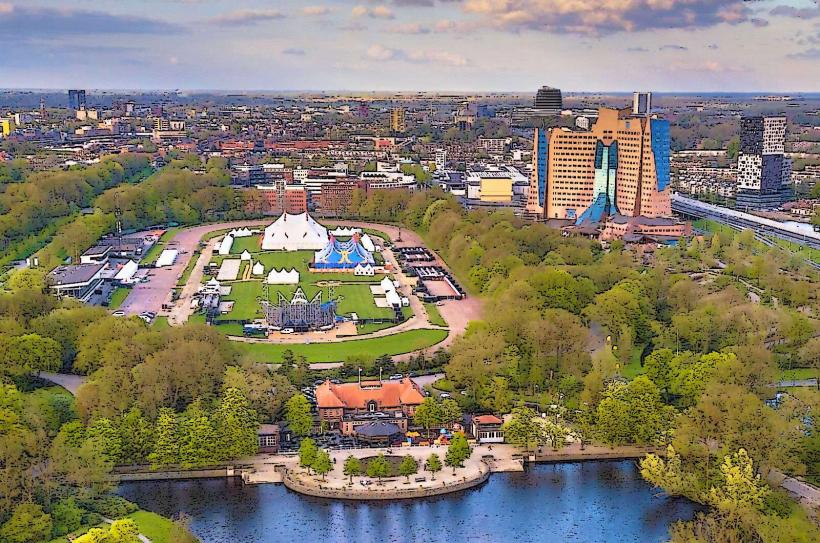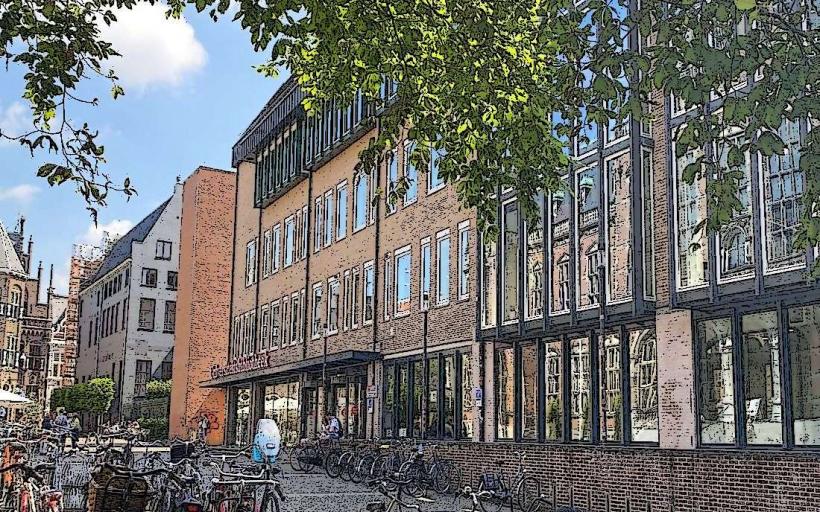Information
Landmark: PrinsentuinCity: Groningen
Country: Netherlands
Continent: Europe
The Prinsentuin is a beautiful and historic public garden located in the heart of Groningen, Netherlands. It is one of the city’s most cherished green spaces, combining natural beauty with historical significance. Here’s a detailed overview of the Prinsentuin:
1. Historical Background
- Origins: The Prinsentuin dates back to the 17th century, originally created as a private garden for the wealthy aristocratic families of Groningen. It was part of the land surrounding the Prinsenhof, a former palace and residence of the Stadtholders of the northern Netherlands.
- Design: The garden was designed in the Dutch Renaissance style and reflects the classical garden aesthetics of the time, with symmetrical layouts and geometric shapes.
- Public Access: In the 19th century, the garden was opened to the public and has since become one of the most popular and scenic spots in the city.
2. Design and Layout
- Formal Garden Layout: The garden’s design follows the principles of the Renaissance and Baroque gardens, with straight pathways, neatly trimmed hedges, and symmetrical flower beds. The layout aims to create an organized, visually appealing space.
- Key Features:
- Pond: A central pond surrounded by lush greenery adds to the tranquil atmosphere of the garden.
- Statues and Monuments: The garden is adorned with statues and memorials, including historical figures related to Groningen’s past.
- Flower Beds: Throughout the year, the garden showcases an array of colorful flowers and plants, changing with the seasons.
- Trees and Shrubs: Tall trees line the pathways, offering shade and creating a peaceful, retreat-like environment.
3. Cultural Significance
- The Prinsenhof: Historically, the garden was part of the Prinsenhof, the residence of the prince-bishops and the Stadtholders of Groningen, offering a glimpse into the city’s political and cultural heritage.
- Art and Architecture: The garden is not only an oasis of nature but also home to a number of artistic elements, such as statues, fountains, and commemorative plaques.
- Symbol of the City’s History: The Prinsentuin connects the city’s past with the present, serving as a place where visitors can reflect on the region’s historical importance in the context of Dutch political life.
4. Features and Attractions
- Botanical Beauty:
- The Prinsentuin is particularly known for its beautiful collection of flowers, especially during the spring and summer months. The variety of plants, including tulips, roses, and daffodils, creates a vibrant landscape.
- There are also various trees and shrubs that create a tranquil, wooded feel along the pathways.
- The Orangery: In the garden is a historical orangery, which was originally built for the cultivation of citrus trees. Today, it hosts temporary exhibitions and small events.
- Rotunda: The central rotunda, a classical garden structure, acts as a focal point for the garden and adds to its architectural elegance.
- Peaceful Atmosphere: The garden is designed to provide a serene escape from the bustle of the city, offering a quiet space for relaxation, reading, or a leisurely stroll.
5. Events and Activities
- Concerts and Cultural Events:
- The Prinsentuin hosts various outdoor concerts, festivals, and cultural events throughout the year, particularly in the summer months. These events often include live music, theater performances, and other artistic activities.
- Public Tours: Guided tours are available for those interested in learning more about the history of the garden, its plants, and the Prinsenhof.
6. Accessibility and Visiting
- Location: The Prinsentuin is centrally located, just a short walk from the Grote Markt (the central square of Groningen), making it easy to reach for both locals and tourists.
- Opening Hours: The garden is generally open year-round, with extended hours during the warmer months. It’s a popular spot for both casual visitors and those attending specific events.
- Entrance: There is no entrance fee to visit the garden, making it a free and accessible space for everyone to enjoy.
7. Fun Facts
- Name Origin: The name "Prinsentuin" (Prince’s Garden) refers to the Stadtholders (princes) of the Netherlands who once resided in the nearby Prinsenhof.
- Historical Remains: The garden is located on the grounds of what was once a grand palace and residence of the political elite, and its features reflect this noble heritage.
The Prinsentuin is a delightful destination for nature lovers, history enthusiasts, and those simply looking to enjoy a peaceful break in one of Groningen’s most charming green spaces. Whether for a relaxing walk or to attend a cultural event, it’s a perfect spot in the city. Would you like additional information on events or other attractions nearby?

